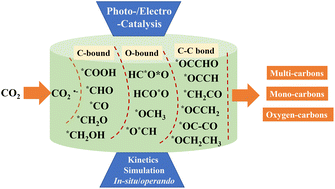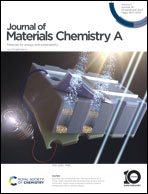Intermediates and their conversion into highly selective multicarbons in photo/electrocatalytic CO2 reduction reactions
Abstract
There is tremendously increasing interest in the reductive conversion of CO2 into liquid fuel and value-added oxygenated multicarbons (C2+) to solve the environmental and energy issues by photocatalysis and electrocatalysis. To achieve this goal, the key point is to obtain high efficiency and selectivity of multicarbon production, for which identifying and controlling intermediates are one of the most critical issues to get more C2+ products. Based on the significant depiction of CO2 properties and reduction principles, this review focuses on the reports that have described the identification, conversion, reaction kinetics of intermediates, and pathways and mechanisms of multicarbon products during photocatalytic and electrocatalytic CO2 reduction. Theoretical simulation with electronic and kinetic calculation will also be summarized to present a deeper insight into the efficiency and selectivity of multicarbon product formations. At the end, some perspectives and future research directions are included to give some inspirations in guiding catalytic system integration, including the catalyst design and preparation, catalytic reaction mechanism investigation, reactor design, and techno-economic analysis.

- This article is part of the themed collections: Journal of Materials Chemistry A Recent Review Articles and #MyFirstJMCA


 Please wait while we load your content...
Please wait while we load your content...